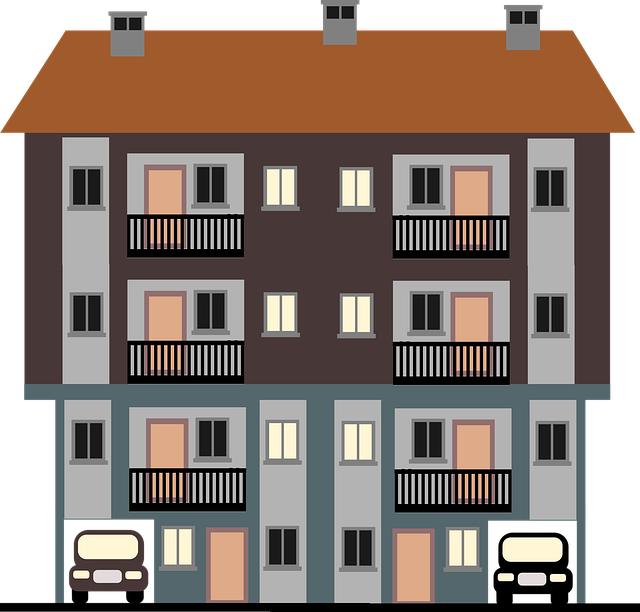Glulam (Glued Laminated Wood) is a modern, innovative building material renowned for its superior structural integrity and aesthetic appeal. It offers high load-bearing capacity, dimensional stability, fire resistance, and the ability to create curved structures, making it ideal for both commercial and residential projects. Safety is paramount in glulam construction, with stringent regulations covering handling, installation, personal protective equipment (PPE), training, inspections, and specialized knowledge. Adhering to these measures ensures secure environments while promoting eco-friendly practices through the use of sustainable PPE. Glulam's structural integrity is verified through rigorous testing, and its natural fire resistance reduces the need for chemical treatments. Ergonomic design principles prioritize worker safety by ensuring comfortable and safe handling of heavy materials, contributing to a safer construction atmosphere.
“Glulam, or glued-laminated timber, is a cutting-edge construction material known for its strength and versatility. This article delves into the safety standards surrounding glulam construction, from initial understanding to critical aspects like personal protective equipment (PPE), structural integrity testing, fire safety, and ergonomics. By exploring these key areas, we ensure that glulam’s benefits are realized while upholding stringent safety measures in every stage of fabrication and construction.”
- Understanding Glulam: Definition and Basic Properties
- Safety Regulations for Glulam Construction Sites
- Personal Protective Equipment (PPE) in Glulam Fabrication
- Structural Integrity: Testing and Quality Control Measures
- Fire Safety Considerations for Glulam Structures
- Ergonomics and Workplace Safety in Glulam Construction
Understanding Glulam: Definition and Basic Properties
Glulam, short for Glued Laminated Wood, is a powerful and versatile building material that has been gaining significant traction in modern architecture. It’s crafted by gluing together multiple layers of dimension wood, typically from softwood sources like spruce, pine, or fir. This laminating process creates structural elements with exceptional strength-to-weight ratios, making glulam a preferred choice for various applications.
In the realm of construction, glulam stands out in both commercial and residential projects, particularly in high-end residential designs where its aesthetic appeal and structural integrity are highly valued. The material’s basic properties include superior load-bearing capacity, dimensional stability, and fire resistance. These qualities, coupled with advanced glulam construction techniques, enable architects and builders to create bold, curved structures that were once challenging to achieve with traditional building materials.
Safety Regulations for Glulam Construction Sites
In the realm of construction, especially with innovative and sustainable building materials like glulam, safety regulations are paramount. Sites employing glulam, known for its strength and eco-friendly nature, must adhere to stringent protocols to ensure the well-being of workers and the integrity of structures. These standards encompass a range from proper handling and installation techniques to comprehensive personal protective equipment (PPE) guidelines. For instance, when dealing with glulam for eco-friendly urban development or high-end residential projects, it’s crucial to maintain clear communication channels and thorough training programs for all personnel involved in the construction process.
Regular inspections are integral to identifying potential hazards, ensuring structural integrity, and upholding safety standards. Additionally, given the unique properties of glulam as a sustainable building material, specialized knowledge is required to mitigate risks associated with its specific applications. By prioritizing these safety regulations, glulam construction sites can foster a secure environment, contributing to the development of both eco-friendly urban landscapes and exquisite residential spaces.
Personal Protective Equipment (PPE) in Glulam Fabrication
In the realm of glulam construction, ensuring safety is paramount, especially during fabrication processes that involve intricate and complex geometry. Personal Protective Equipment (PPE) plays a pivotal role in safeguarding workers from potential hazards inherent to handling this innovative building material. Adequate PPE includes specialized gear such as safety goggles, respirators, and durable gloves designed to withstand the unique properties of glulam, including its strength and adhesive bonds.
When employing glulam as a green building solution, it’s crucial to opt for eco-friendly alternatives for PPE. This reduces the environmental impact of construction sites while promoting sustainable practices. By choosing products that align with these values, builders can contribute to a broader effort to minimize the carbon footprint associated with both glulam fabrication and construction, further underscoring this material’s potential as a responsible choice in modern architecture.
Structural Integrity: Testing and Quality Control Measures
Structural integrity is a paramount concern in glulam construction, ensuring that these wood composite elements withstand various loads and environmental factors. Rigorous testing protocols are implemented to verify the strength and stability of glulam components before their integration into building structures. This includes subjecting glulam samples to extreme stress conditions, such as bending, shear, and compressive forces, to mimic real-world scenarios. Advanced non-destructive testing methods, like ultrasound and X-ray technology, are employed to assess internal defects or damage without compromising the material’s integrity.
Quality control measures play a pivotal role in maintaining the structural integrity of glulam products. Stringent standards are set for raw material selection, manufacturing processes, and final product inspection. Regular audits and certifications ensure that glulam applications, such as those in bridge building and green building solutions, adhere to strict design considerations for wind load resistance. These measures collectively contribute to the overall safety and durability of glulam structures, making them a preferred choice for modern construction projects.
Fire Safety Considerations for Glulam Structures
Fire safety is a critical aspect of glulam construction, given the material’s unique properties. Glulam, known for its structural integrity and aesthetic appeal in modern architecture, offers excellent fire resistance due to its dense wood composition. This makes it an ideal choice for sustainable building practices, as it provides natural insulation and reduces the need for additional fire-retardant treatments.
However, when constructing glulam structures, strict guidelines must be followed. The use of glulam panelization techniques enhances fire safety by creating compartmentalized spaces, which can slow down the spread of flames. This method is particularly beneficial in high-rise buildings and large public spaces, ensuring that fire safety considerations are seamlessly integrated into the design phase. Moreover, regular maintenance and proper ventilation systems are essential to mitigate any potential risks associated with glulam construction, ensuring a safe environment for occupants and first responders alike.
Ergonomics and Workplace Safety in Glulam Construction
In glulam construction, ergonomics and workplace safety are paramount due to the unique materials and techniques involved. Workers handling glulam, a structural product made from laminating wooden strips, must be trained in proper lifting and assembly methods to prevent injuries associated with heavy materials. Implementing ergonomic design principles ensures that workers can perform tasks comfortably and safely, reducing the risk of repetitive strain injuries.
The use of glulam construction techniques offers several structural advantages, including superior strength-to-weight ratio and excellent dimensional stability, which contribute to safer work environments. Glulam’s versatility also enables the creation of complex geometric forms, such as curved structures, through innovative glulam options available in the market. By adhering to safety standards and leveraging the structural benefits of glulam, construction sites can foster a more secure atmosphere for workers.
Glulam construction, while offering innovative structural advantages, demands a comprehensive understanding of safety standards. From site preparation to fabrication and assembly, adhering to strict regulations ensures the well-being of workers and the structural integrity of glulam buildings. Proper personal protective equipment (PPE), rigorous testing, fire safety measures, and ergonomic considerations are vital components of any glulam construction project. By prioritizing these safety standards, industry professionals can harness the benefits of glulam while minimizing risks, ensuring safe and sustainable builds.







